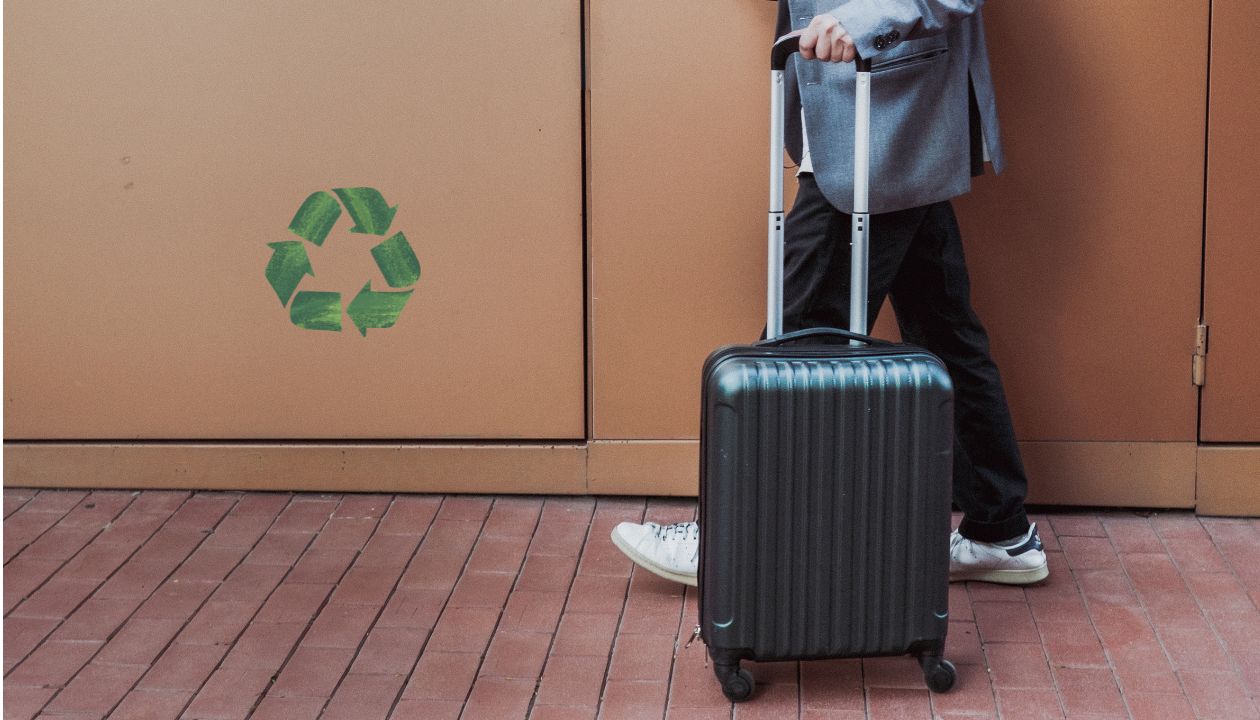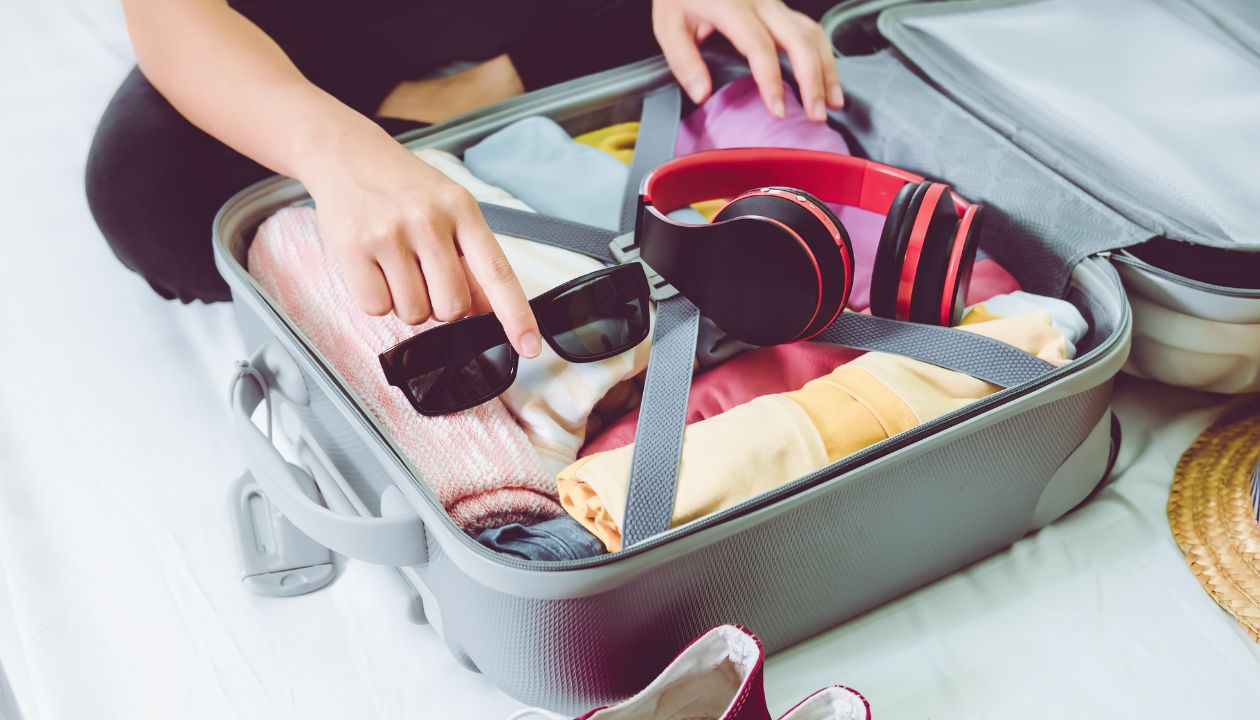
Eco-Friendly Luggage Materials: Bamboo, Hemp, and Beyond
Introduction: Redesigning the Bag for a More Sustainable Future
Travel is evolving, not only in how we book flights or organize itineraries but also in the very fabric that transports our gear.

Now, environmentally aware travelers are posing questions that go a little deeper:
-
What material is my suitcase made from?
-
Where did these materials originally come from?
-
Where will they go when I'm finished with them?
As sustainability shifts from buzzword to necessity, the spotlight is now on the materials that make up our luggage—and the impact they leave behind. That’s where bamboo, hemp, cork, recycled plastic, and other alternatives come in, reshaping the travel gear industry from the inside out.
This article explores the rise of eco-friendly luggage materials, their pros and cons, and why they’re more than just a trend—they’re the future.
Why Luggage Materials Matter More Than Ever
The worldwide luggage market is anticipated to hit $72 billion by 2028. But a majority of those suitcases are constructed from:
-
Polycarbonate and ABS plastic (non-biodegradable, petroleum-based)
-
Nylon and polyester (plastic-based fabrics that shed microplastics)
-
Faux leather and vinyl (often PVC—one of the most poisonous plastics)
These materials:
-
It takes centuries to break down.
-
Emit toxic fumes when burnt.
-
Often can't be recycled because of mixed materials.
The outcome? Millions of used bags are clogging landfills annually.
Enter: nature's materials—robust, sustainable, and unexpectedly chic.
Bamboo: The Grass That's Stronger Than Steel
What it is:
Bamboo is a rapidly growing grass (not a tree!) that regrows without replanting and stores carbon at 5x the rate of trees.
Why it's awesome for luggage:
-
Naturally resilient and surprisingly light
-
Antibacterial and water-resistant
-
Grows without pesticides or chemical fertilizers
-
Biodegradable, unlike typical plastics
Common applications:
-
Bamboo handles and trim
-
Hard-case panels with bamboo composite reinforcement
-
Bamboo fiber lining fabric
Brands testing it:
Certain boutique eco-luggage companies now make bags with bamboo details or blended materials. Although full-shell bamboo luggage is not common, it's increasingly popular in accessories, particularly carry-on handles, name tags, and cosmetic bags.
Caveat:
Pure bamboo shells are not yet mass-scale because of price and moldability constraints, but hybrids (bamboo + recycled plastics) are promising
Hemp: The Eco Warrior of Fabrics
What it is:
One of the most ancient crops in human history, hemp grows quickly, uses minimal water, and resists pests naturally.
Why it's perfect for luggage:
-
Extremely durable—3 times the tensile strength of cotton
-
UV-resistant and breathable
-
Softens with age but stays tough
-
Completely biodegradable and compostable if untreated
Typical applications:
-
Duffel bags, backpacks, and weekender luggage
-
Luggage straps and linings
-
Hemp-cotton blends for soft-shell luggage
What travelers adore:
Hemp bags have a natural, coarse, earthy look and are perfect for adventure or nature travel.
Brands that use hemp:
-
Hemper (for socially conscious backpacks)
-
Terra Thread
-
Speciality kerchief Indian labels incorporating khadi and hemp for culturally inspired lines
Caveat:
Hemp can quickly wrinkle and is not waterproof in itself—frequently mixed with organic cotton or waxed for longevity.
Cork: Nature's Leather
What it is:
Cork is extracted from the bark of the cork oak tree without felling the tree. It naturally regenerates every 9–12 years.
Why it's a trendsetter:
-
Waterproof, fire-resistant, and antimicrobial
-
Vegan substitute for leather
-
Soft to the touch but long-lasting
-
Biodegradable and recyclable
Common applications:
-
Travel bag tags, wallets, pouches
-
Hard-shell paneling on light suitcases
-
Fashion-forward accent in carry-on luggage
What makes cork unique:
Cork brings a luxurious but minimalist look—making it a favorite among city wanderers, artists, and vegans.
Caveat:
Though resilient, cork is best applied in moderate-wear zones—it's not appropriate for harsh baggage handling zones unless supported.
Aside from Bamboo, Hemp & Cork: Other Sustainable Materials to Follow
♻️ Recycled PET (rPET):
-
Derived from recycled plastic bottles
-
Utilized in hard shells and inner linings
-
Decreases plastic waste and energy consumption during production
-
Preferred by brands such as Koora, Paravel, Solgaard
♻️ Recycled Aluminum:
-
Lightweight, durable, and infinitely recyclable
-
Increases premium, industrial-chic appearance
-
Employed in high-end modular luggage
♻️ Organic Canvas:
-
Cotton is cultivated with non-toxic pesticides.
-
Breathable, biodegradable, and resilient
-
Regularly found in soft-sided, foldable bags
♻️ Apple Leather / Piñatex (Pineapple Leather):
-
Bio-materials sourced from agricultural residue
-
Fashion-forward, soft, and vegan
-
Ideal for accessories such as toiletry bags, passport cases, or fashion bags
How to Identify Truly Eco-Friendly Luggage (and Steer Clear of Greenwashing)
Not every "eco-luggage" is created equal. Some companies tack on buzz terms such as "natural" or "vegan" but have little to back it up.
Here's what to look for:
- Material Transparency: Do they disclose exactly which materials are used—and what percentage is recycled?
-
Certifications: Check for GRS (Global Recycled Standard), OEKO-TEX, or B Corp certification.
-
End-of-Life Plan: Can you recycle or return the bag afterward?
-
Repairable Design: Do they sell spares or have repair initiatives?
-
Minimal Packaging: Are the products sent plastic-free or in recycled packaging?
The most ethical brands also do carbon offsetting, circularity, and community impact.
The Aesthetic of Sustainability: From Rustic to Refined
Eco-friendly no longer has to equal earthy and dull.
Present-day bags are:
-
Sleek, structured, and fashionable
-
Colored with plant-based or low-impact dyes
-
Equipped with top-of-the-line zippers, wheels, and modular systems
Comes in muted colors, minimalist design, and travel-intelligent features such as integrated laundry pouches or USB charging.
Even high-end travelers are choosing sustainable alternatives—not only for the planet, but simply because they look better and age better.
Why This Matters: Beyond the Airport
Going sustainable isn't just about what you carry—it's about what world you leave behind.
-
Each plastic bag skipped = less microplastic in oceans
-
Each hemp or cork buy = more pressure for regenerative agriculture
-
Each recycled suitcase = one less landfill weight
It's not a decision. It's a ripple.
As travel bounces back after the pandemic, the things we carry are not only changing the way we travel but also the way we live, consume, and renew.
Eco-friendly luggage is one of the most powerful—and forgotten—travel choices we have the ability to make.
It's no longer about durability or looks alone. It's about significance.
No matter if you choose bamboo's strength in silence, hemp's raw beauty, or cork's sophisticated simplicity, you're not merely purchasing a bag. You're casting a ballot for a future that weighs less on the earth and more on intention.



Leave a comment
This site is protected by hCaptcha and the hCaptcha Privacy Policy and Terms of Service apply.